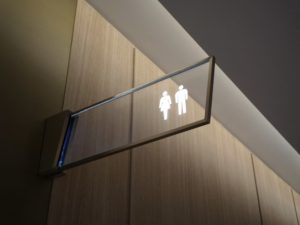
Over 30 million Americans suffer from some kind of urinary incontinence. Most people with this condition treat it with diapers, pads, medications, and surgery. But working with a physical therapist can in many cases help improve or resolve the problem completely.
In many cases women are more affected by this condition than men. Higher instances of urinary incontinence in women are caused by menopause, pregnancy, childbirth and the structure of the female urinary tract. Control of the bladder involves use of the pelvic floor muscles. When the pelvic floor muscles are weak or not contracting properly urine is not being held in. A weak pelvic floor can end up hanging down like a hammock, this condition will signal the bladder to contract all day long.
The Different Types of Urinary Incontinence
Urge incontinence- This happens when a strong sudden urge to use the bathroom happens and leaking of urine may occur on the way to the bathroom.
Stress incontinence- This happens when increased intra-abdominal pressure and pelvic floor muscles do not have enough control to maintain continence. This type of urinary incontinence has certain triggers such as sneezing, laughing, or physical activity.
Mixed incontinence- This occurs when both urge and stress incontinence are experienced.
Urinary frequency- Is when a person feels the need to empty their bladder very frequently throughout the day. This also applies to people that have to urinate more than once during the night.
Functional incontinence- Is when people leak urine while on the way to the bathroom. This may happen with or without experiencing a strong urge to use the bathroom.
What to Expect During Physical Therapy
If you’re coming to therapy with this condition a physical therapist will give you an initial evaluation to discover what kind of urinary incontinence you are experiencing. During the evaluation the therapist will ask you for a thorough description of your symptoms and daily experiences. The therapist will then most likely assess the strength and flexibility of the pelvic floor muscles. The muscles in the pelvis, hip, and low back may also be assessed.
After the evaluation the therapist will develop a treatment plan for you that if followed closely can help you regain control over your symptoms. Treatment normally involves using a combination of manual therapy, therapeutic exercise, and behavioral training, a therapist can help “teach” the bladder to hold more urine.
The treatment course usually has an emphasis on strengthening the core muscles, particularly the pelvic floor and lower abdominals. During the treatment not only will urinary incontinence improve or get better, but other problems often also improve, such as low back or hip pain.
Physical therapy for urinary incontinence goes beyond just Kegel exercises. Many different kinds of exercises are used to increase the strength of the pelvic floor. Most people experiencing pelvic floor issues have found that Kegel exercises alone cannot fix a weakness problem. Not only that, but without proper instruction from a medical professional up to 50% of people do these exercises incorrectly. A physical therapist can teach you how to perform these exercises properly in combination with general core strengthening to achieve maximum relief from your symptoms.
Urinary incontinence is a very treatable condition. If you are ready to get real help for this condition and get better make an appointment at IMPACT for urinary incontinence treatment today!
